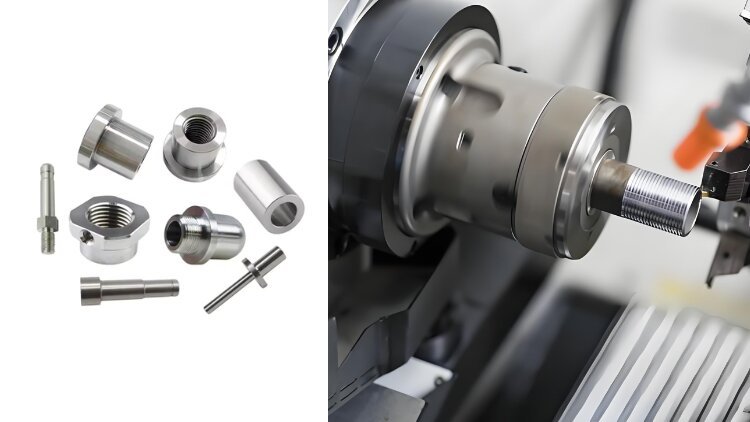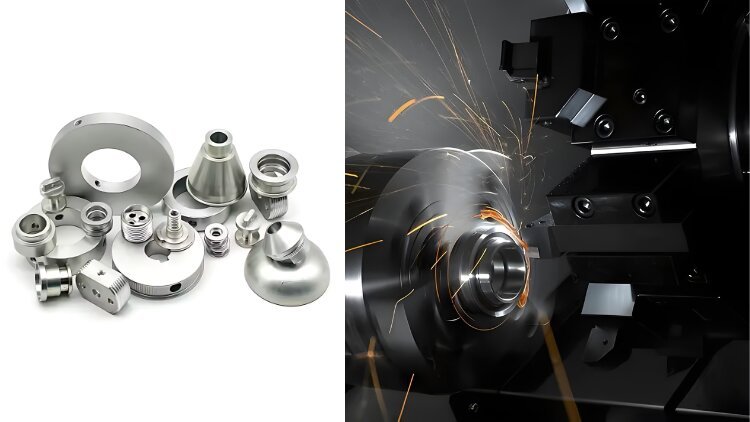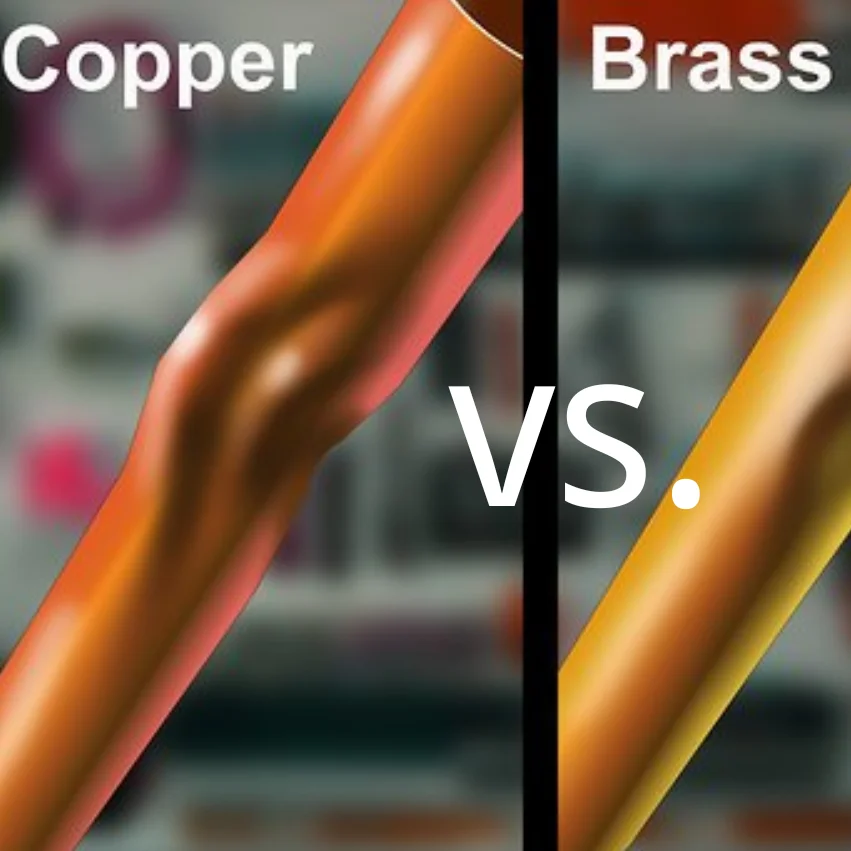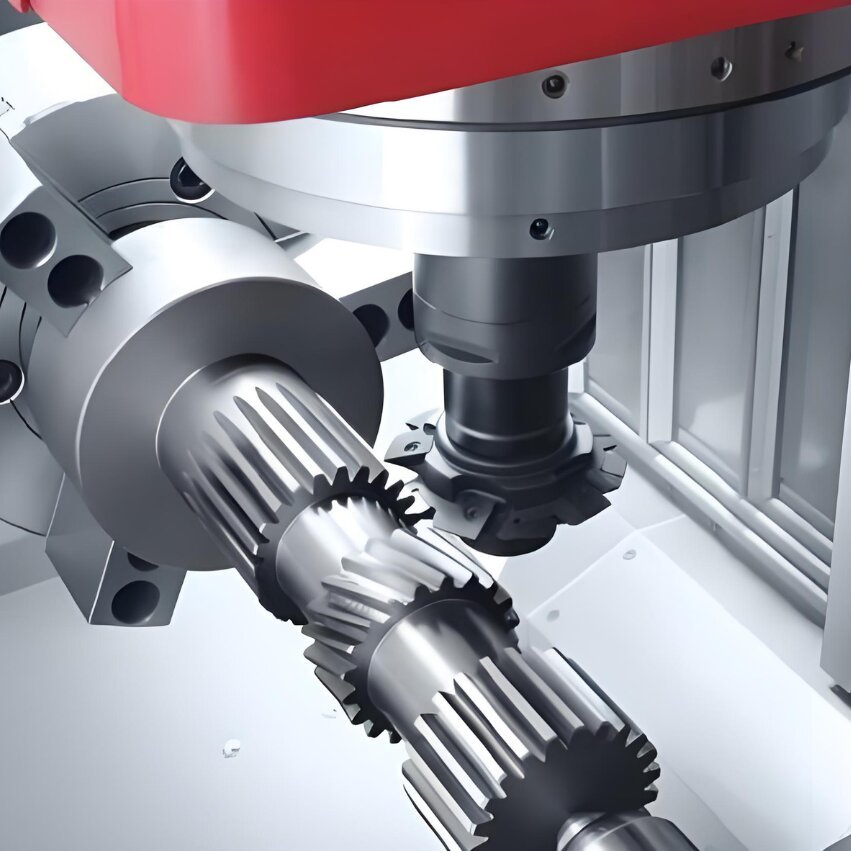Turning is a cornerstone of modern machining, used to create precision parts in a wide variety of industries. From automotive to aerospace, each type of turning has a different effect.
Read on as we delve into the principles of turning operations, and the eight types of turning, and provide guidance on how to choose the right turning operation.
Related reading: What is the Difference Between CNC Turning and CNC Milling?
How Does Turning Operation Work?
Turning is a machining process used to create cylindrical parts by removing material from a rotating workpiece. Here’s a step-by-step guide to how a turning operation works:

Step 1: Fix the Workpiece
Before turning, you need to fix the workpiece to the lathe, and then fix it with a chuck or panel, or use a center support at both ends.
Step 2: Install the Cutting Tool
Mount the appropriate cutting tool on the lathe tool holder. Note: The choice of tool depends on the material of the workpiece and the specific turning operation planned, such as roughing or finishing.
Step 3: Set Parameters
Before processing, you need to set key parameters such as spindle speed (RPM), feed rate, and cutting depth, because these parameter settings will affect the cutting speed and material removal rate.
Step 4: Perform Cutting Operations
After the parameters are set, start the lathe and the workpiece begins to rotate at the set speed. At the same time, the cutting tool begins to contact the rotating workpiece. It can move longitudinally (along the axis of the workpiece) for cylindrical processing, or radially (toward or away from the center of the workpiece) for end processing.
Step 5: Measure and Adjust
During turning, the workpiece should be measured continuously to ensure that the dimensions meet the requirements. Adjust the lathe parameter settings or cutting tools based on the measurement results.
8 Types of Turning Operations
Before introducing the different types of turning operations, let us first briefly outline the advantages and application areas of different types of turning operations.
|
Operation |
Advantages | Application Areas |
|
Turning |
High Precision, Versatile Shapes |
Automotive, Aerospace, tool Manufacturing |
|
Tapping |
Accurate Internal Threads | Construction, Machinery, Fastening Systems |
| Threading | Precise External Threads |
Plumbing, Automotive, Hardware |
|
Boring |
High Dimensional Accuracy | Engine Cylinder Finishing, Bearing Housings |
|
Knurling |
Improved Grip |
Tool Handles, Knobs, Adjustment Screws |
| Drilling | Efficient Material Removal |
General Manufacturing, Construction, Fabrication |
|
Grooving |
Custom Groove Creation |
Sealing Surfaces, lubrication Paths |
| Parting | Efficient Part Separation |
Batch Production, Component Manufacturing |
Turning
Turning is the most common machining method in CNC machine tools. This operation uses a single-point cutting tool to trim a rotating workpiece. The tool is positioned at a certain angle and feed rate, and when the workpiece rotates, material is removed to reduce its diameter to achieve the desired cylindrical shape.
In addition, turning operations have two machining methods: roughing and finishing. The focus of roughing is to quickly reduce the workpiece to a thickness close to the finished product. Speed is the primary factor compared to accuracy and surface quality. The purpose of finishing is to achieve accurate dimensions and smooth surfaces.
Tapping
This process mainly uses a tapping tool to axially pass the thread through the existing drilled hole into the workpiece for processing. When a special clamp supports the tap on the tailstock shaft, the workpiece will slowly rotate on the plate. Depending on the geometric dimensions of the tap, a variety of threads can be processed, such as metric, imperial, or isopycnic.
In addition, tapping is widely used in the manufacture of parts that require threaded components for fastening, such as bolts and screws.

Threading
Threading is similar to tapping, which is the process of cutting threads on the outer surface of a workpiece with a cutting tool. This process is achieved by moving the cutting tool along one side of the workpiece. To obtain a deeper thread, the tool needs to be processed along the side of the workpiece several times.
Threading is widely used to manufacture screws, bolts, and accessories that require external threads.
Boring
Boring is the process of using a single-point cutting tool to enlarge a bore (or a casting), such as a bored gun barrel or an engine cylinder.
In addition, boring can also be used to cut tapered holes. One thing to note is that boring cannot form a hole, it is only suitable for pre-drilling. So it is usually suitable for small-sized workpiece processing.
Knurling
The knurling process is mainly to create a sawtooth or diamond pattern on the surface of the workpiece. This process is mainly achieved using a knurling tool, which contains a set of hardened steel rollers that press the pattern into the material as it rotates.
In addition, the main purpose of knurling is to provide a better grip for the finished product, and it is usually used for tool handles, knobs, and thumb screws.
Drilling
Drilling is the process of drilling a circular hole in a workpiece using a rotating drill. The drill is pressed against the workpiece and material is removed as the workpiece rotates. This is also the most common drilling method used in almost all machining projects.
Drilling is widely used in the machining of parts such as machinery, electrical appliances, household products, engine components, and car bodies.
Grooving
Grooving is a process whereby a cutting tool cuts a groove in the material of a workpiece. However, the size of the cut depends on the width of the tool used. If a wider groove is required, the tool must make multiple cuts along the same path on the workpiece.
In addition, there are two types of grooving: surface grooving and external grooving. In surface grooving, the tool creates a narrow cut in the surface being machined. External grooving, on the other hand, removes material by moving radially on one side of the workpiece.
Parting
Parting is the final process of separating the finished parts from the raw material. In this process, a narrow cutting tool is inserted into the workpiece and cuts until it is cut off.
In addition, Parting is used to accurately cut metal to make small and fine parts such as rings and necklaces.
How to Choose the Right Turning Operations
The following 3 points are the main factors to consider when choosing the right turning operation.
Understanding Material Properties
Different materials, such as metals, plastics, and composites, have different hardness, toughness, and thermal properties. For example, harder materials may require slower cutting speeds or specialized cutting tools.
Define Part Geometry
The shape and size of the part you want to produce will significantly influence the choice of turning operation. Complex shapes may require multiple operations such as grooving, threading, or taper turning. For example, making threaded rods requires turning a small diameter.
Evaluate Tolerance and Precision Needs
The precision required for the final product also determines the turning operation selected. For tight tolerances, operations such as precision turning or hard turning may be required. For example, precision turning is often used to create bearing surfaces of exact dimensions.
FAQ
How Many Types of Turning Are There?
The turning processes are typically carried out on a lathe, considered to be the oldest of machine tools, and can be of different types such as straight turning, taper turning, profiling, or external grooving.
What is Turning Operations?
A turning operation is employed when the surface of a workpiece needs to be machined to the required diameter. In other words, excess material is removed from the external diameter of a workpiece or cylindrical surface. In a boring operation, a cutting tool is used to create specified shapes in an existing hole.
What Type of Process is Turning?
What is turning? Turning is a machining process where a lathe is used to rotate the metal while a cutting tool moves in a linear motion to remove metal along the diameter, creating a cylindrical shape. The cutting tool can be angled differently to create different forms.
Summary
Turning is a versatile and essential machining process used by a wide range of industries to produce high-quality cylindrical parts. Understanding the various types of turning operations, can help you choose the right turning operation service.
If you are looking for CNC turning services, you can contact us today to get a project quote.




